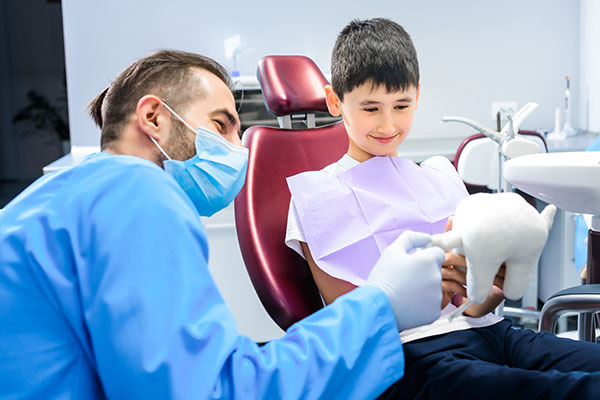Ask a Dentist: Why Is an Oral Cancer Screening Important?

Many dentists use routine cleanings or checkups as an opportunity to offer an oral cancer screening to their patients. This quick and painless check may be something of a mystery to many dental patients who do not know how the exam works or how important it can be.
What is oral cancer?
This is a blanket term for cancers of the mouth. As with other cancers, oral cancers develop when DNA mutates and makes the cells divide and grow when they should have died and been replaced. Cancer may develop on the gums, cheeks, tongue, throat, or lips. Oral cancer sometimes also develops on the roof of the mouth or on the floor of the mouth, under the tongue. An individual cannot count on seeing evidence of tumors or lesions until the cancer is fairly advanced.
While anyone is at some risk of getting oral cancer, the risks are higher for certain groups. A history of tobacco use, including smokeless tobacco, or a history of heavy alcohol use increases the risk. Long-term sun exposure also raises the risk of lip cancer, while a history of any oral cancer leads to higher odds of cancer reemerging. Anyone with one or more of these risk factors is likely to benefit from regular screenings.
Past exposure to the human papilloma virus may also be a risk factor, though medical scientists are not certain if there is a relationship. The Mayo Clinic reports a substantial increase in the incidence of mouth and throat cancer in recent years and lists HPV exposure as one possible explanation.
How does screening help?
Briefly, a screening can reveal oral cancer at an early stage. This means the cancer is more likely to be survivable. Early detection means that treatment could be less radical. As early detection and treatment are so important, patients with oral cancer risk factors described above are advised to get screened regularly. Oral cancer produces certain symptoms that cannot be ignored:
- Pain or difficulty when swallowing
- Mouth or ear pain
- A mouth or lip sore that does not go away
- A growth or lump anywhere in the mouth
- White or red patches in the mouth
Anyone experiencing one or more of those symptoms should contact their doctor or dentist to arrange an exam.
The oral cancer screening process
Oral cancer screenings are usually quick and always painless. The dentist examines the patient's mouth looking for lesions, red spots, and swelling that should not be there. The dentist may also check the neck for lumps. Some oral cancer screenings use a light wand to illuminate the mouth and highlight lesions. If there is evidence of a problem, the dentist may want to do a biopsy. This requires taking a tissue sample and analyzing it.
Conclusion
A routine oral cancer screening can help medical professionals identify potential tumors early, which is particularly valuable for those individuals at elevated risk. These cancers may be growing in frequency. Screenings are simple, painless, and readily available.
Request an appointment here: https://www.aboutdentalcare.com or call About Dental Care at (435) 652-9105 for an appointment in our St. George office.
Check out what others are saying about our dental services on Yelp: Oral Cancer Screening in St. George, UT.
Recent Posts
A general dentist professional would be the most obvious choice of people to go to get an oral cancer screening. Because your dentist has most likely seen you before, they will be able to screen your mouth without any issue.Since a lot of people are not educated on oral cancer screenings, the most common questions…
An oral cancer screening is a visual and physical evaluation of the oral cavity and associated structures to check for signs of potential problems and prompt quick treatment if any are detected. A dentist might suggest a screening based on the patient's lifestyle choices, or it could be done as a precautionary measure. According to…
Gum disease is a common yet serious condition that negatively impacts oral health if left untreated. The condition can result from plaque and bacteria buildup, starting with mild symptoms and leading to tooth loss. Knowing the stages of gum disease and when to seek treatment can help protect your gums and teeth.Gum disease, or periodontal…
The CDC states that gum disease, also known as periodontal disease, is one of the leading oral infections in the United States. In addition, the National Institute of Health cites it as the most common culprit for adults losing teeth. Because the early stages of periodontal disease often do not have noticeable symptoms, many patients…


